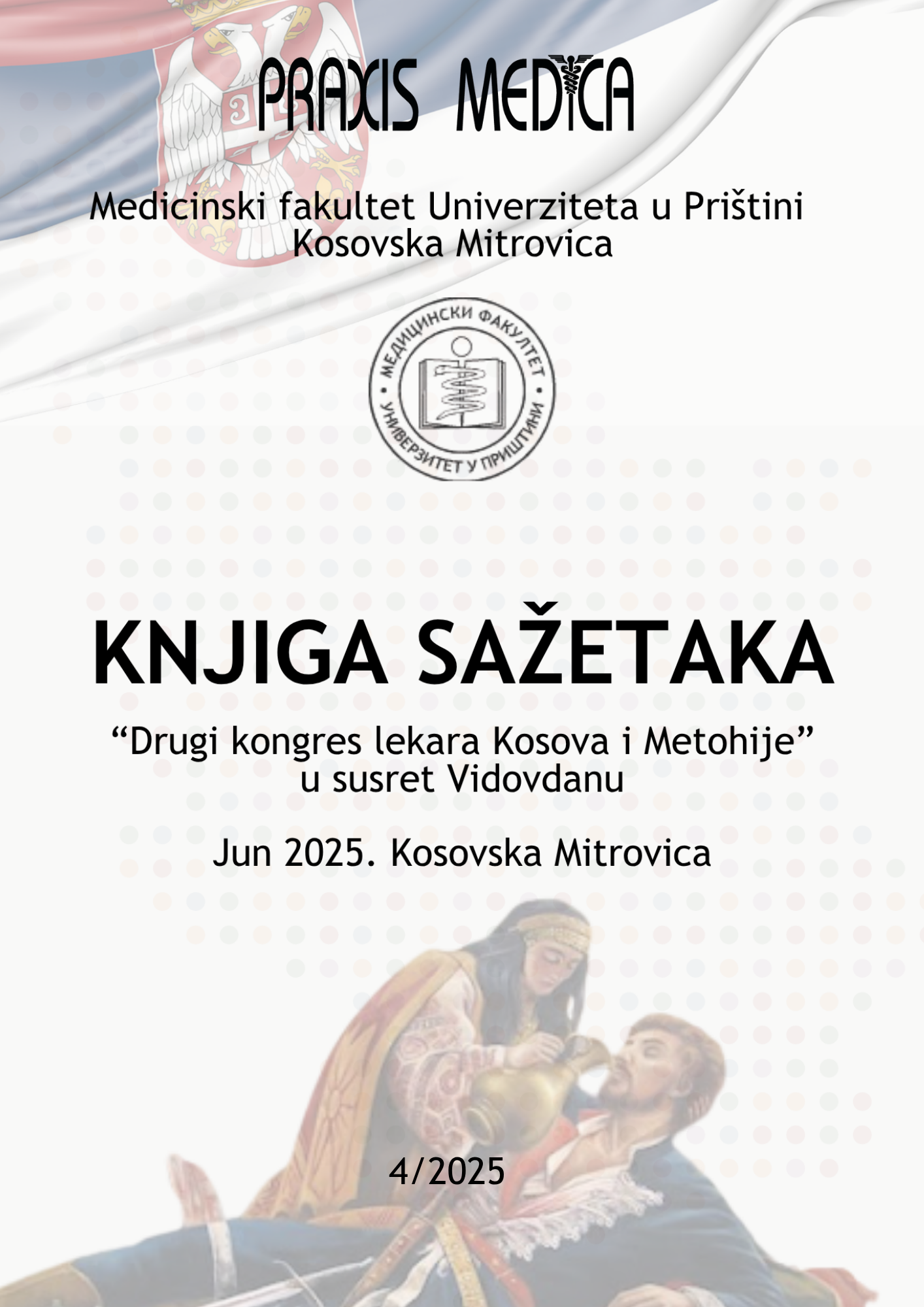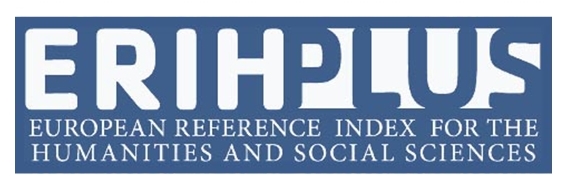Current issue

Volume 53, Issue 4, 2025
Online ISSN: 2560-3310
ISSN: 0350-8773
Volume 53 , Issue 4, (2025)
Published: 30.06.2025.
Open Access
All issues
Contents
30.06.2025.
Professional paper
RAZLIKE U SOCIODEMOGRAFSKIM I KLINIČKIM KARAKTERISTIKAMA, POSTAVLJANJU DIJAGNOZE I TERAPIJSKIM ALGORITMIMA IZMEĐU PACIJENATA SA NEPSIHOTIČNOM I PSIHOTIČNOM DEPRESIJOM
Uvod: Psihotična depresija je ozbiljna bolest tokom koje pacijent pati od kombinacije depresivnog raspoloženja i psihotičnih katrakteristika u vidu halucinacija i/ili sumanutih ideja.
Naši ciljevi su bili: Procena ispravnosti dijagnoze psihotične depresije (F32.3, F 33.3) i nepsihotične depresije (F32.1, F32.2, F 33.1, F 33.2); Procena odstupanja lečenja u kliničkoj praksi od algoritma lečenja psihotične depresije; Ispitivanje učestalosti najčešće ordiniranih antipsihotika i antidepresiva u kliničkoj praksi, kao i najčešće kombinacije ordiniranih antipsihotika (AP) i antidepresiva (AD) u kliničkoj praksi; Ispitivanje povezanosti socio-demografskih podataka sa psihotičnom depresijom.
Metod: Ovo istraživanje, dizajnirano kao retrospektivna kohortna studija, sprovedeno je u Klinici za psihijatrijske bolesti "Dr Laza Lazarević" u periodu od 1. maja 2014. do 1. maja 2017. godine. U studiju su bili uključeni hospitalizovani pacijenti sa dijagnozom teške epizode depresivnog poremećaja bez psihotičnih karakteristika (F32.2) i teške epizode depresivnog poremećaja sa psihotičnim karakteristikama (F32.3), prema kriterijumima ICD-10. Pacijenti su podeljeni u dve grupe, pri čemu je prvu grupu činili pacijenti sa dijagnozom F32.2, a drugu pacijenti sa dijagnozom F32.3.
Rezultati: U istraživanje je bilo uključeno 60 hospitalizovanih pacijenata, od kojih je 30 (50%) imalo dijagnozu teške epizode depresivnog poremećaja bez psihotičnih karakteristika, a 30 (50%) dijagnozu teške epizode depresivnog poremećaja sa psihotičnim karakteristikama.
Kada su u pitanju sociodemografske karakteristike, jedina statistički značajna razlika primećena je u polu između pacijenata bez psihotične depresije i onih sa psihotičnom depresijom. Naime, u grupi pacijenata sa nepsihotičnom depresijom, muškarci su činili više od dve trećine ispitanika, dok su u grupi pacijenata sa psihotičnom depresijom žene činile dve trećine ispitanika.
Kada je reč o terapiji, statistički značajna razlika primećena je u učestalosti primene antipsihotika u lečenju pacijenata u ispitivanim grupama (p=0,001). Naime, u lečenju pacijenata sa psihotičnom depresijom značajno češće su korišćeni prvenstveno tipični antipsihotici (26,7% naspram 3,3%), ali i atipični antipsihotici (70,0% naspram 50%). S druge strane, pacijenti sa nepsihotičnom depresijom češće su bili bez antipsihotičke terapije u poređenju sa pacijentima sa psihotičnom depresijom (46,7% naspram 3,3%).
Zaključak: U ovom istraživanju su pacijenti imali ispravnu dijagnozu za psihotičnu depresiju, ali nisu tretirani po važećem algoritmu.
Ključne reči: Psihotična depresija, nepsihotična depresija, algoritmi lečenja.
Mary Vukša, Marijana Marinković, Milica Bogdanović
15.01.2025.
Original scientific paper
USE OF PSYCHOACTIVE SUBSTANCES AMONG BELGRADE UNIVERSITY STUDENTS WITH DIAGNOSED SOMATIC OR MENTAL DISORDERS
Introduction/Objective
The objective of this study was to examine the relationship between use of psychoactive substances among University students and diagnosed somatic or mental disorders.
Methods
The cross-sectional study was conducted in a population of 2,000 students of the Belgrade University. Four faculties (Medicine, Geography, Economics, Electrical Engineering) from which the students participating in this research were chosen by the method of random choice (by computer listing), conducted in the period April - June 2010.
Results
We observed that are more numerous students who used psychoactive substances among students with diagnosed somatic illnesses compared to those without them. Statistical significance was found among students who used tobacco (p=0.027), alcohol (p=0.002), sedatives (p<0.001) and cannabis (p=0.021). Mental disorders are also connected to use of psychoactive substances. The statistical significance was achieved for all psychoactive substances except for alcohol.
Conclusion
Use of psychoactive substances is an important issue among University students with diagnosed somatic or mental disorder. Therefore, it is essential to recognize the symptoms and consequences of such behavior, and above all and connection thereof, the importance of prevention which may enhance better solution-seeking via proper education.
Mirjana Stojanovic-Tasic, Mirjana Virijevic, Kristina Rakic, Emilija Novakovic, Ivana Stasevic Karlicic, Nenad Milosevic, Jelena Aritonovic Pribakovic, Jovana Milosevic, Milica Bogdanovic, Suzana Adzic, Katarina Bisevac, Mary Vuksa
15.02.2025.
Original scientific paper
THE PREVALENCE OF ALCOHOL CONSUMPTION AMONG STUDENTS AT THE UNIVERSITY OF BELGRADE
Introduction/Objective
The objective of this study was to determine the prevalence of alcohol use in the student population of the University of
Belgrade.
Methods
The cross-sectional study was conducted in a population of 2,000 students of the Belgrade University. Four faculties (Medicine, Geography,
Economics, Electrical Engineering) from which the students participating in this research were chosen by the method of random choice (by computer
listing), conducted in the period April - June 2010.
Results
Among our respondents, the highest amount of spirits is consumed by respondents from the Faculty of Electrical Engineering, with 22% of
them consuming more than 6 shots on each occasion, while the smallest number of students who drink more than 6 shots on each occasion are from
the Faculty of Economics, with 8%. Students from the Faculty of Electrical Engineering, who have the lowest prevalence of cigarette use, consume
alcohol in a binge drinking pattern. The highest frequency of binge drinking in the past year and in the past month before the survey was among
respondents from the Faculty of Geography.
Conclusion
There is a need for developing a conscience about all the effects that alcohol has, especially physical ones which are not usually noticed
immediately; taking responsibility for own actions; working on a healthy life style and educating people to enhance and improve their health control.
Mirjana Stojanovic-Tasic, Mirjana Virijevic, Kristina Rakic, Emilija Novakovic, Ivana Stasevic Karlicic, Nenad Milosevic, Jelena Aritonovic Pribakovic, Jovana Milosevic, Milica Bogdanovic, Suzana Adzic, Katarina Bisevac, Mary Vuksa





